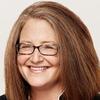Patent Infringement After Duncan Parking Technologies: Doctrine of Equivalents, Claim Construction
Recording of a 90-minute premium CLE video webinar with Q&A
This CLE course will guide patent counsel regarding the impact of recent court decisions and their guidance on direct, induced, and contributory infringement, claim construction, literal infringement, doctrine of equivalents infringement, including hypothetical claims, and even the reverse doctrine of equivalents. The panel will offer their experiences and practical approaches for addressing claim construction and infringement issues.
Outline
- Court treatment
- Claim construction of varying scope as applied now under the same standard (Philips) in both the district courts and PTAB AIA post-grant proceedings
- Direct infringement, particularly how is it proven and how to avoid reciting unnecessary elements in a claim
- The doctrine of equivalents infringement, including Graver Tank, Duncan Parking, and Wilson Sporting Goods, narrows claiming
- Prosecution (disavowal)/prosecution history estoppel, including Festo and its progeny, as well as Duncan Parking
- Best and worst practices and things in between
Benefits
The panel will review these and other vital questions:
- How do recent court decisions offer guidance for claim construction? What pitfalls do the cases identify?
- What best practices can practitioners use for claim construction of varying scope under the same standard in the district courts and PTAB post-grant proceedings?
Faculty

Mark J. Feldstein, Ph.D.
Partner
Finnegan Henderson Farabow Garrett & Dunner
Dr. Feldstein focuses on U.S. district court litigation, primarily concerning the enforcement of U.S. patent rights and... | Read More
Dr. Feldstein focuses on U.S. district court litigation, primarily concerning the enforcement of U.S. patent rights and trade secret issues, and post-grant trial proceedings at the USPTO, including inter partes review (IPR) and post grant review (PGR). He maintains an active patent prosecution practice, preparing and prosecuting U.S. patent applications on behalf of domestic and foreign clients. He also provides opinions and strategic guidance to clients on infringement, validity, enforceability, and clearance matters. His practice encompasses a range of technologies, including pharmaceuticals, biochemistry, polymers, small molecule chemistry, optics, and medical and analytic devices.
Close
Doris Johnson Hines
Partner
Finnegan Henderson Farabow Garrett & Dunner
Ms. Hines focuses her practice on patent litigation and has led teams in U.S. district courts, the U.S. International... | Read More
Ms. Hines focuses her practice on patent litigation and has led teams in U.S. district courts, the U.S. International Trade Commission, and before arbitration panels. She has argued a number of cases before the U.S. Court of Appeals for the Federal Circuit. She regularly represents clients in mediations and assists in licensing negotiations. She advises clients on strategic patent prosecution, monetization strategies for issued patents, and patent damages, including issues relating to standard essential patents and fair, reasonable, and non-discriminatory (FRAND) terms.
Close
Thomas L. Irving
Partner
Finnegan Henderson Farabow Garrett & Dunner
Mr. Irving has 35 years of experience in the field of IP law. His practice includes due diligence, patent prosecution,... | Read More
Mr. Irving has 35 years of experience in the field of IP law. His practice includes due diligence, patent prosecution, reissue and reexamination, patent interferences, and counseling, including prelitigation, Orange Book listings of patents covering FDA-approved drugs, and infringement and validity analysis in the chemical fields, as well as litigation. Mr. Irving has served as lead counsel in many patent interferences.
Close
Adriana L. Burgy
Partner
Finnegan Henderson Farabow Garrett & Dunner
Ms. Burgy focuses on opinion work, client counseling, patent prosecution and management, and litigation in the... | Read More
Ms. Burgy focuses on opinion work, client counseling, patent prosecution and management, and litigation in the chemical, pharmaceutical, and biotechnology arts. She counsels her clients on a diverse range of patent issues. She assists clients on single-patent issues as well as complex matters involving multiple patents and applications requiring ongoing advice on patent portfolio strategy and development, with an eye towards litigation. From a patent prosecution perspective, she has drafted and prosecuted numerous patent applications domestically and internationally, guided and advised clients on complex procedural and legal issues surrounding clients' patent portfolios, developed and implemented strategic prosecution in support of ongoing litigation, generated strategies for maximizing investment in patent portfolios, and facilitated the identification of high-priority applications within patent portfolios.
Close